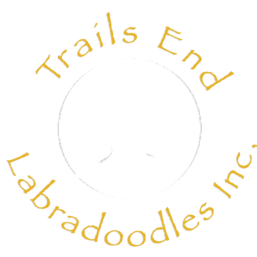FAQ
1.Is it true that Labradoodles don’t shed?
Some doodles are non-shedding, others shed slightly and still others shed quite a bit. Webster’s dictionary defines shedding as: “to shed a natural growth, to continually drop off or fall out, to pour out, give off, always replacing, emit.” Non shedding in a labradoodle refers to low hair loss between winter and summer and some low hair(breakage) loss like humans can have low hair loss. This is not considered shedding. The F1 ( Labrador Retriever x poodle) is lower shedding than a lab, can be low shed, and occasionally non shed. F1B’s (Labradoodle x poodle) are generally non or low shed because there is a higher percentage of poodle in this dog. Generally, multigenerational labradoodles (Labradoodle x Labradoodle) are considered non shedding as per the definition of shedding.
2. How much exercise does a Labradoodle need?
Labradoodles need moderate exercise. It is also very important to limit the type of high-impact exercise (i.e. high jumps, long runs) that a Labradoodle pup undertakes until approx 14 months when his growth plates have matured. This is generally true for medium to large dogs especially.
3. Is a Labradoodle for everyone?
No. These dogs are people oriented and long to serve and please you. Labradoodles are extremely social animals who thrive on companionship. They will not do well if they are delegated to the position of “outside-only dog” or kept in a crate alone for extended periods of time.
4. Why is there such a large range in pricing for a Labradoodle?
We feel it is very important to test our breeding stock (CERF, OFA Elbows, PENNHIP, PRA, VWd, etc…) to ensure that you receive the highest-quality puppy possible. If a breeding dog does not test at the highest standard we will not use this dog for breeding and must loose this investment. Vaccinations, Vet visits, surgeries, high quality food, toys and supplies that we send home with the puppy & their family also put a large dent in a breeder’s budget. If a breeder doesn’t test or responsibly care for the parents & pups, there is less cost/less risk to the breeder and more risk for the puppy owner. If the breeder does make these efforts, it will save you a lot of money and heart-ache in the long run.
5. Are Rawhide Bones safe for my dog?
We found this article and posted it here for your benefit. We highly recommend this site for pet education. HERE is the article from their site!
“Results of a study reported in the Journal of the American Medical Association showed that in groups of test dogs, even in those fed rawhide strips three times a day, there were no ill effects.
If dogs swallow small pieces of rawhide, these will pass easily through the digestive tract. There is the potential that larger size pieces could cause choking or intestinal obstruction. Common-sense prevention measures should be taken. A dog should not have access to a rawhide product while unsupervised. Some dogs may quickly chew and swallow large pieces of rawhide. When your dog has chewed on a piece of rawhide to the point of it becoming soft, take that rawhide chew away and substitute another. Allow the softened rawhide to dry and harden, and it can then be given back to the dog.”
Our dogs at Trails End Labradoodles love to chew rawhide, and their teeth are staying healthy and white even as they get older!
6. How do I brush my dog’s teeth?
Here is a link into a great slide show that will get you started: Click here. And don’t forget the dog chews!


